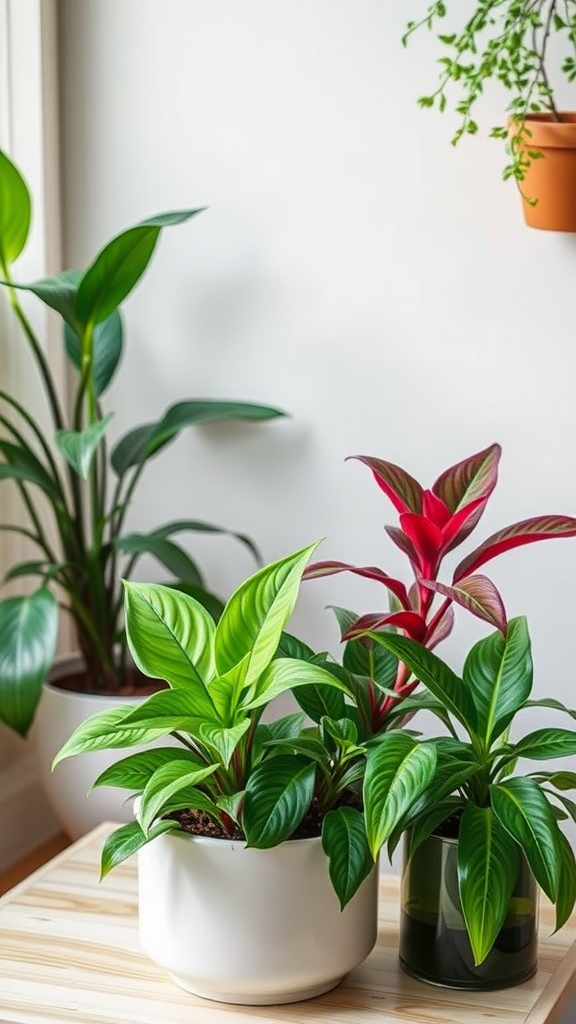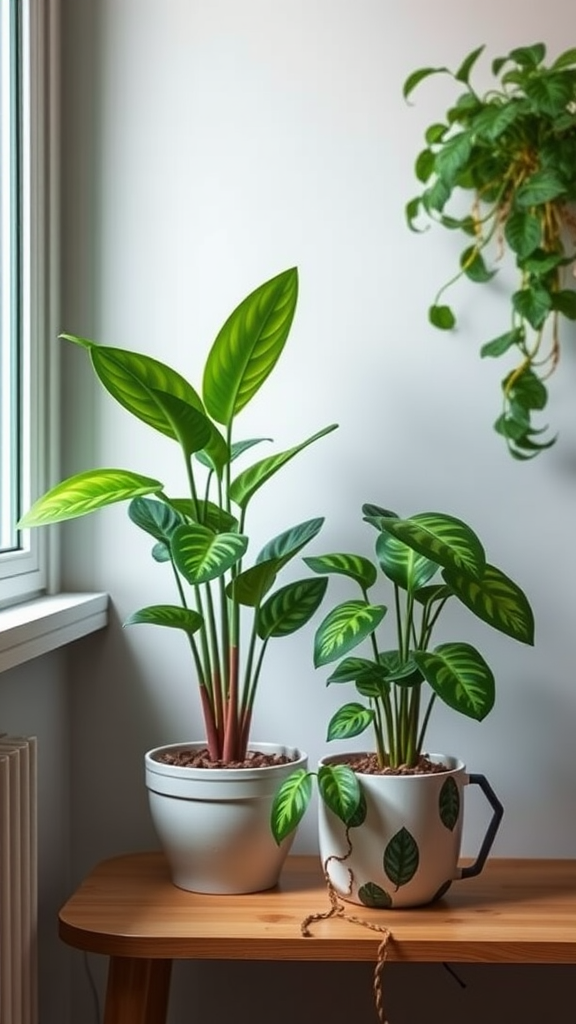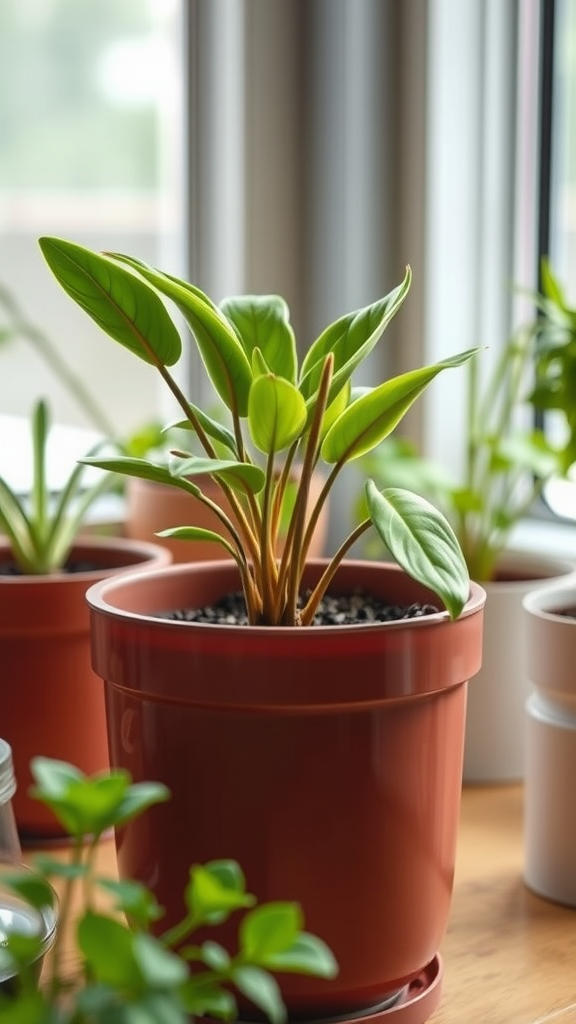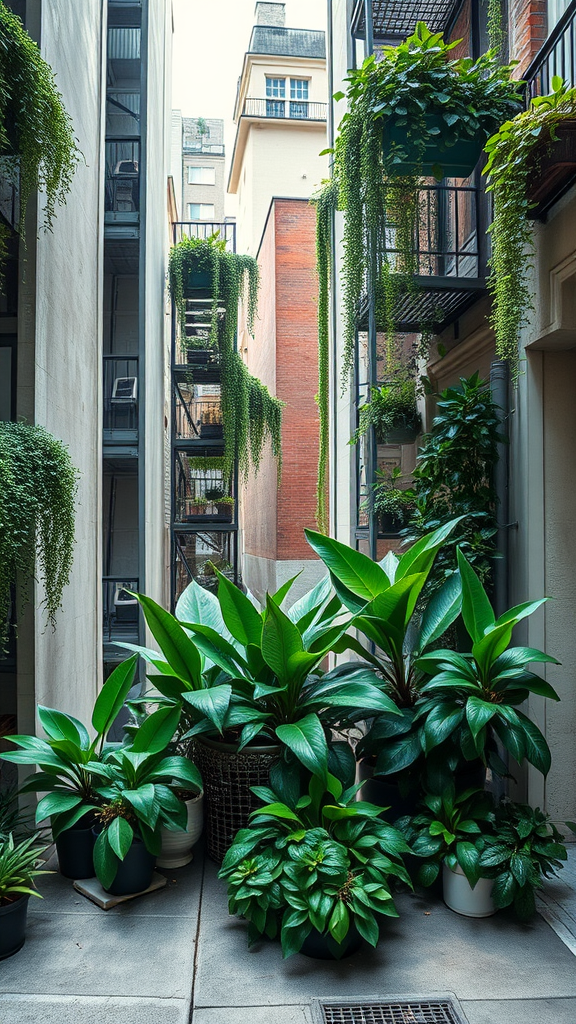Rare Houseplants Every Collector Needs: Must-Have Species for Your Collection
If you’re a houseplant enthusiast, you understand that not all plants are created equal. Some are common and easy to find, while others spark excitement due to their rarity and unique beauty. For those who want to create a stunning and coveted collection, here are some rare houseplants every collector needs to consider.
Monstera Albo Variegata
This stunning variant of the popular Monstera Deliciosa features creamy white marbling against the lush green backdrop of its leaves. It’s not just a feast for the eyes; its unique foliage can add personality to any space. The Monstera Albo is notoriously rare due to its slow growth and high demand. To care for this beauty, provide bright, indirect light and maintain humidity levels for optimal growth.
Philodendron Pink Princess
The Philodendron Pink Princess is a show-stopper with dark green leaves adorned with striking pink hues. This plant has captured the hearts of many due to its vibrant colors and stunning appearance. Rare and somewhat elusive, securing one of these for your collection can be quite the achievement. It thrives in warm, humid environments and needs indirect sunlight to keep its colors vivid.
Rare Variegated Snake Plant
The Variegated Snake Plant, often referred to as Sansevieria, is a resilient plant that features creamy white stripes along its green leaves. Not only is it visually striking, but it is also easy to care for, making it perfect for beginners. However, finding a rare variegated version can be a challenge due to limited availability. Place it in bright, indirect light and allow the soil to dry completely between waterings for optimal health.
Staghorn Fern
This unique fern has distinctive fronds that resemble the antlers of a stag. Staghorn ferns are not your average houseplant and can be mounted on wood or displayed in hanging baskets to showcase their beautiful shape. They require a specific care routine, including a high humidity environment, which makes them a rare and sought-after choice for collectors.
Alocasia Frydek
The Alocasia Frydek, with its striking dark green leaves and white veins, is a must-have for collectors seeking unique foliage. This plant prefers indirect light and a humid environment to flourish. It’s known for being a bit finicky but is worth the effort for its stunning aesthetics. In a collection, it stands out due to its eye-catching appearance and rarity.
Rhapidophora Tetrasperma
Also known as the Mini Monstera, Rhapidophora Tetrasperma is adored for its unique, split leaves. Unlike its larger cousin, the Monstera, this plant has a more compact growth habit. It’s a great addition for those with limited space who still want a touch of exotic flair in their plant collection. It thrives in bright, indirect sunlight and requires regular watering to keep its foliage healthy and vibrant.
Variegated String of Hearts
This beautiful trailing plant is not just rare but also an excellent choice for hanging or cascading displays. The variegated version of the String of Hearts features heart-shaped leaves with pink and white variegation, making it a charming addition to any plant collection. It’s relatively easy to care for, as it prefers bright light and infrequent watering, which is perfect for busy plant lovers.
Tips for Sourcing Rare Houseplants
- Specialty Nurseries: Look for shops that focus on rare or unique plants. They often have limited-edition collections that you won’t find in general stores.
- Online Marketplaces: Websites and social media groups dedicated to plant enthusiasts often have sales where you can find rare species.
- Plant Swaps: Attend local plant swaps or events to trade and acquire rare plants from fellow collectors.
- Join Plant Clubs: Being part of a plant club can give you access to exclusive sales or offers on rare houseplants.
Collecting rare houseplants can be both rewarding and exciting. Each unique species adds a special touch to your home and provides a chance to learn about different care techniques. As you expand your plant family, remember to embrace both the challenge and joy that come with nurturing these exceptional plants. Whether you’re a seasoned collector or just starting your journey, these rare houseplants are sure to inspire admiration and envy.
How to Care for Rare Houseplants: Tips for Thriving Treasures
Rare houseplants have become the darlings of plant collectors and urban jungle enthusiasts. These unique treasures not only beautify your space but also enhance your air quality and provide a sense of calm. However, taking care of them requires special attention. Let’s explore how you can ensure these exquisite plants thrive in your home.
Understanding Your Rare Houseplants
Every rare houseplant has its own distinct needs. Familiarizing yourself with the specific requirements of your plant will set the foundation for its health. Some may prefer bright, indirect sunlight, while others need lower light conditions. Research is key! Always check the plant’s origin and its natural habitat, as this will guide you in recreating the same conditions.
Light Requirements
Light is essential for the growth of your rare houseplants. Here are some tips to provide the right amount:
- Indirect Light: Many rare species thrive in bright, indirect light. Place them near a window but avoid direct sunlight, which can scorch their leaves.
- Low Light Plants: If your plant prefers low light, choose a spot away from direct sun. Consider plants like the Zamioculcas zamiifolia (ZZ plant) that thrive under these conditions.
- Rotate for Even Growth: Rotate your plants every few weeks to ensure all sides receive equal light exposure, promoting even growth.
Watering Wisely
Proper watering is crucial for your plant’s health. Overwatering is often more detrimental than underwatering. Here’s how to get it right:
- Check Moisture Levels: Always check the soil moisture before watering. Stick your finger about an inch into the soil; if it feels dry, it’s time to water.
- Drainage is Essential: Ensure your pots have drainage holes. Standing water can lead to root rot, which is fatal for rare plants.
- Watering Schedule: Establish a watering schedule based on the specific plant’s needs. Some may require weekly watering, while others might only need it every two to three weeks.
Humidity and Temperature
Rare houseplants often thrive in specific humidity and temperature ranges. Here are some recommendations:
- Humidity Levels: Most tropical houseplants enjoy higher humidity. Use a humidity gauge to monitor levels and consider placing a humidifier nearby or misting your plants to boost moisture in the air.
- Ideal Temperature: Keep your space between 65°F to 75°F (18°C to 24°C) for optimal growth. Avoid cold drafts or heat sources, like radiators, which can impede your plant’s health.
Fertilizing Rare Houseplants
Using the right fertilizer can give your rare houseplants the nutrients they need. Consider the following:
- Organic Fertilizers: These are often gentler and can help establish healthier soil conditions. Look for slow-release pellets or liquid organic fertilizers.
- Feed During Growing Season: Most rare houseplants benefit from feeding during spring and summer when they are actively growing. Reduce or stop fertilizing during the fall and winter months.
- Specific Nutrient Needs: Tailor your fertilizer to the specific requirements of your plant. Some may benefit from higher phosphorus for blooming, while others need more nitrogen for foliage growth.
Pest Prevention and Care
Rare plants can sometimes attract pests. It’s essential to stay vigilant.
- Regular Inspections: Check your plants weekly for signs of pests like aphids, mealybugs, and spider mites. Early detection is crucial!
- Natural Remedies: Use insecticidal soap or neem oil to combat minor infestations. Always test a small area first to ensure the plant reacts well.
- Healthy Plants Are Less Prone to Pests: A well-cared plant has a better chance of resisting pests. Maintaining optimal light, humidity, and watering will go a long way!
Every collector desires their rare houseplants to thrive. By following these care guidelines, you can create an environment that nurtures these green treasures. Remember, patience and attention to detail are your best tools in cultivating a thriving collection.
Conclusion
Building a rare houseplant collection can be an incredibly rewarding experience. Not only do these unique species bring beauty and character into your home, but they also offer a sense of achievement as you nurture them. Adding must-have species like the Monstera Albo or the Philodendron Pink Princess can elevate your collection, setting it apart and making it a conversation starter among fellow plant enthusiasts.
However, committing to rare houseplants also means understanding their specific needs. With the right care tips—such as prioritizing humidity, using quality potting mixes, and providing ample light—you can ensure that these treasures thrive in your space. Remember that patience is key; acclimatization and gradual growth are part of the journey.
Collectors should also stay informed about new trends and species. As the plant world continues to evolve, keeping up with rare finds can keep your collection fresh and exciting. Engage with online communities and local plant shops; they are often great resources for both advice and rare plant hunts.
Ultimately, embracing the world of rare houseplants is an adventure that combines passion with learning. By selecting the right additions to your collection and providing them with thoughtful care, you’re not only decorating your home but also cultivating your very own green sanctuary that reflects your personal style. Happy collecting!





